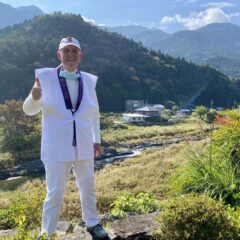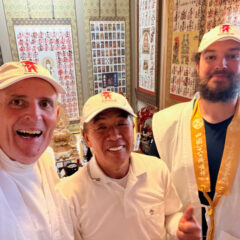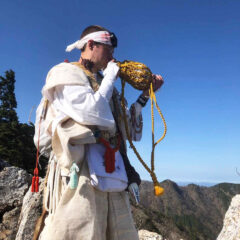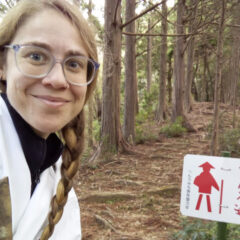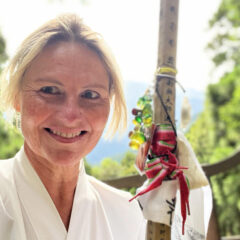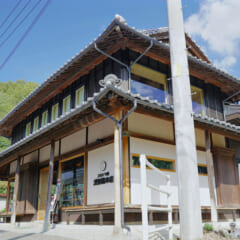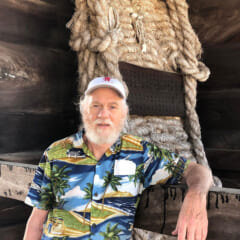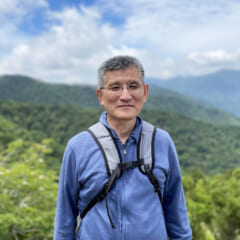My Shikoku Journey (19) by Marta, Portugal
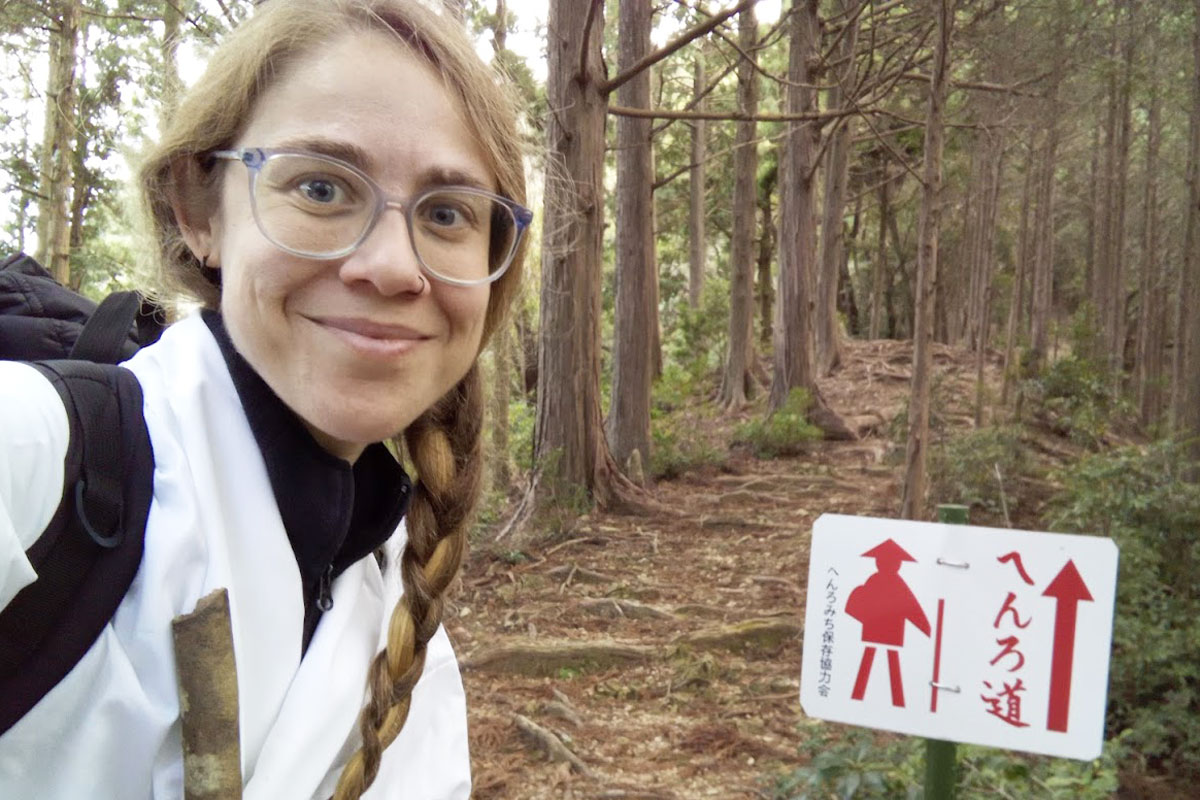
![]() Marta Mundo, Portugal
Marta Mundo, Portugal ![]() Complete Shikoku Pilgrimage
Complete Shikoku Pilgrimage
“Shikoku, Ilha Sagrada de Contos e Encontros”
Back in the fall of 2018, when I was living in Hiroshima, I went on a solo cycling trip from home to Matsuyama. Once I got to Shikoku, the region immediately became one of my favorites in Japan. I was cycling down a hill in Kikuma-cho, Ehime when I saw a young woman wearing a white vest, brown pants, and a conic hat. At the time, I thought she was doing some sort of martial arts training, which made me curious. Days later at work, I asked my boss, who lives in a temple, if she knew anything about the young woman’s training, and she told me I saw an ohenro-san. I got very intrigued, and the word “ohenro-san” kept echoing in my mind, so I had to find out more.
Right from the start the seed had already been planted. I became increasingly drawn to the idea of walking the pilgrimage of Shikoku, and eventually decided to become an ohenro-san in the spring of 2019. However, when I searched I couldn’t find much online in my mother tongue, Portuguese. I found a lot more information in English, which enabled me to better understand the pilgrimage and obtain relevant practical information.
One of the reasons that motivated me to walk was personal development, and Shikoku 88 ticked all the boxes as a journey of the mind, heart, and spirit. The first experience of doing the full circle couldn’t have been better. The 55 days around the island brought me so much joy and many friends, synchronicities, challenges, and insights that I wanted to put them on paper and share my experience.
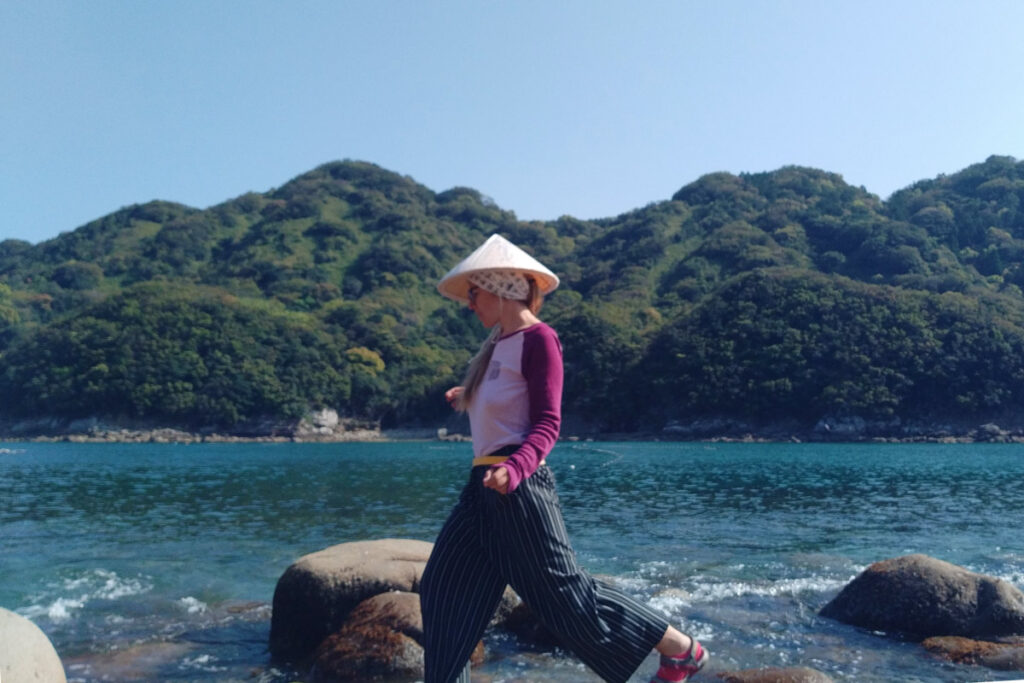
Initially, I was writing a diary of every impactful moment, capturing the sights, interactions, sounds, and details of my journey. However, I paused the writing for a couple of years to prioritize another book on Japanese culture. It was after completing my second circle around Shikoku in 2022 that I wrote a report about the pilgrimage to the Fundação Oriente (Eastern Asian Foundation), which changed the direction of the book. Instead of a journal, I adopted a research approach while still maintaining a personal perspective.
To this day, much has been written about the Shikoku pilgrimage in Japanese, and there are also good sources available in English, French, and German. I was determined to write in Portuguese and the book “Shikoku, Ilha Sagrada de Contos e Encontros” (lit. Shikoku, Sacred Island of Tales and Encounters) took form.
The book is not intended to serve as a guide while on the pilgrimage. Rather, it serves as an introductory book to give an idea of what to expect on the journey and assist with planning.
It introduces Shikoku Island and Buddhism, including its iconography and founder Kobo Daishi. It touches on the history of the pilgrimage, both past and present, as well as future outlooks and there is also a selection of legends on the foundation of temples.
The book provides practical information for planning, including the ways of doing the pilgrimage, the types of accommodations available, the osettai culture, signs, and more.
The book contributes to an understanding of the customs and etiquette not only in temples but also generally in Japan, along with advice on health and safety.
In addition to the 88 temples, the pilgrimage of the sacred island of Shikoku is also made up of people – everyone who takes part in it. Personally, I enjoyed mostly writing about the pilgrims – their motivations, the “aruki-henro”, the “professional-henro” and the “foreigner-henro”. I also unveil some encounters I had with other Ohenro-san in the last chapter. The book was launched in the summer of 2023.
”Sacred Island of tales and encounters”, by Marta Mundo, 2023, in Portuguese” https://shikoku.carrd.co/
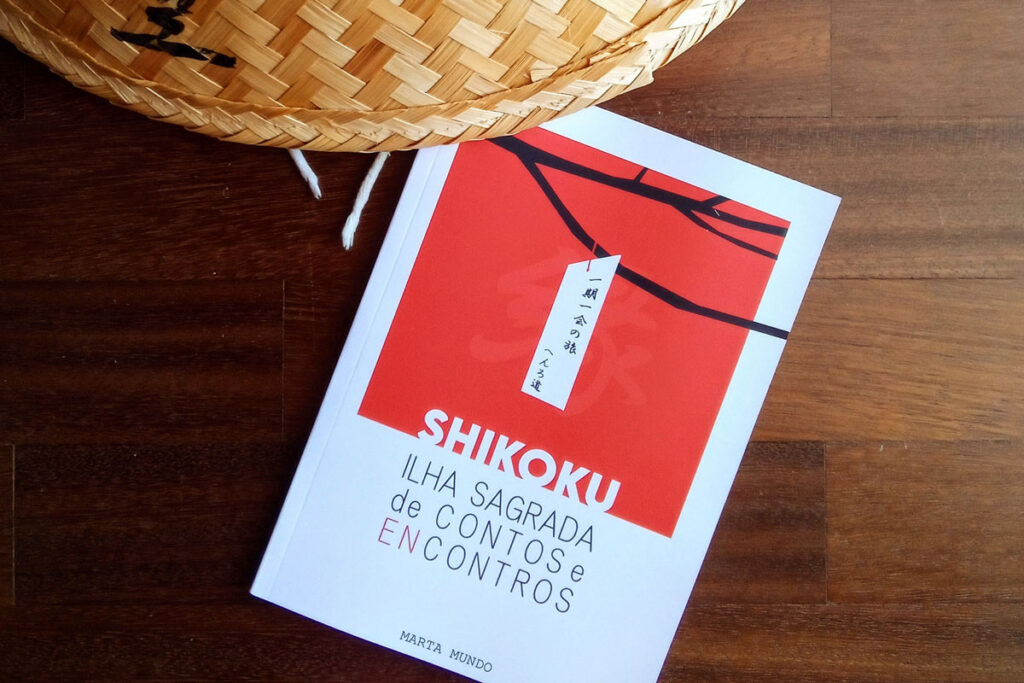


Bio
Marta Mundo has spent the last few years learning about traditional Japanese culture during her time in Japan where she taught languages, worked in hospitality, and traveled extensively.She began practicing sado (tea ceremony) in Hiroshima, continued the practice deepening the practical, aesthetic, and philosophical aspects linked to Zen in Shiga, and then moved to Tokyo, where she furthered her tea studies.Marta has visited Shikoku Island countless times and completed the Shikoku 88 pilgrimage in 2019 and 2021/22.She enjoys exploring, yoga, picnics, hitchhiking, and cycling.Marta Mundo is an author, having written “Um Ano no Japão” and “Shikoku, Ilha Sagrada de Contos e Encontros.”

